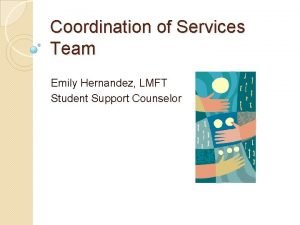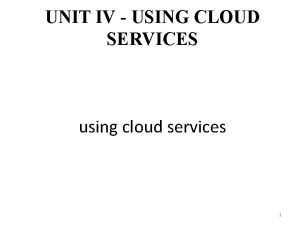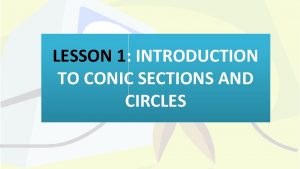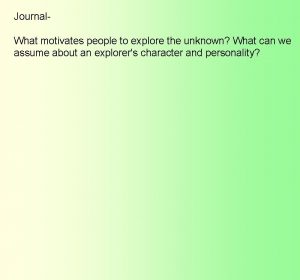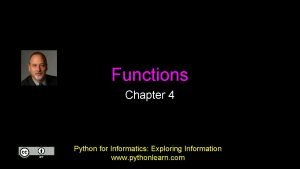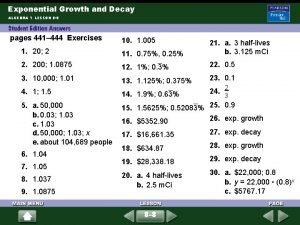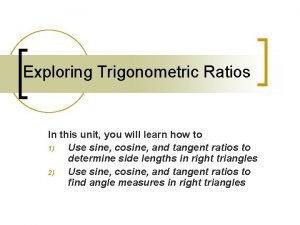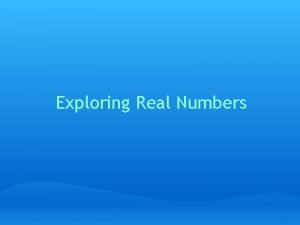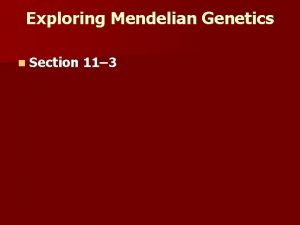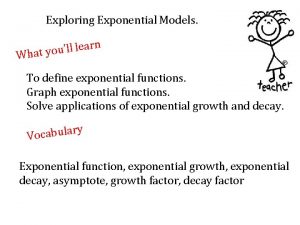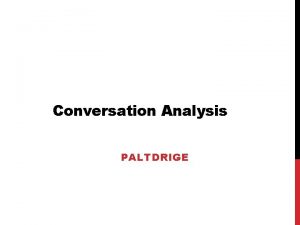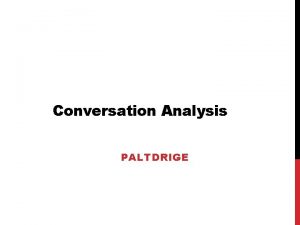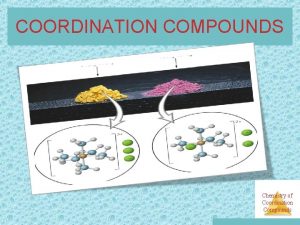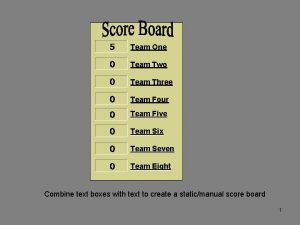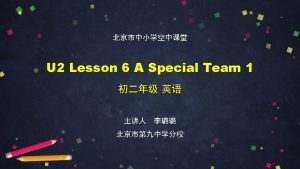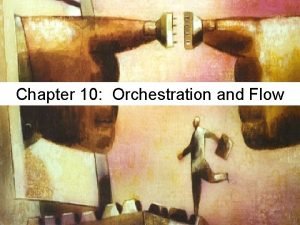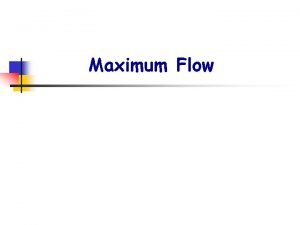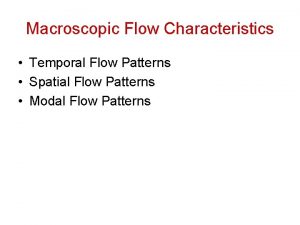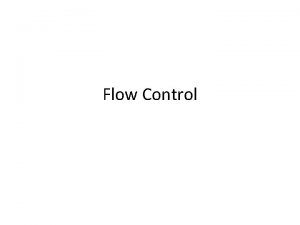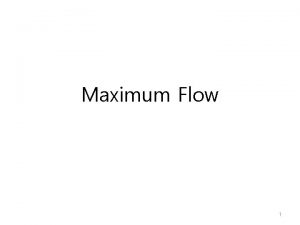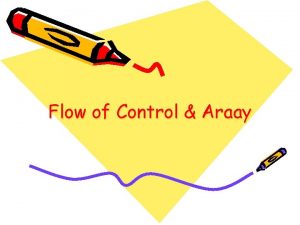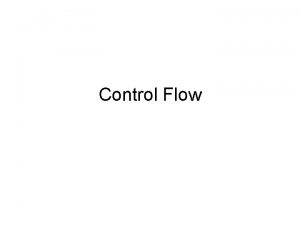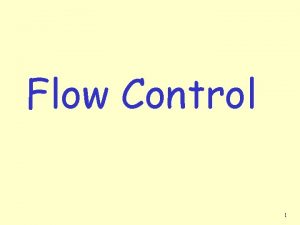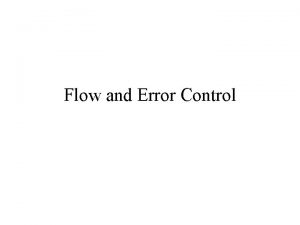Exploring Coordination Flow Conversation 2 A Team Conversation













































- Slides: 45

Exploring Coordination Flow Conversation 2 - A Team Conversation

Agenda 1. Context for the Conversation. 2. Speech Acts - Requests, Offers and Promises. 3. Coordination Flow: • 4 Quadrants. • 8 Conversational Practices. • Closed and Open Loops. 4. Team Assessment – A current map of Team Coordination Performance. 5. Identify 3 and 6 month Coordination Waste Targets. 6. Orientation towards the next Team Conversation.

Speech Acts Conversational practices that: • Help us fulfill our commitments and promises. • Enable us to build engagement, trust and partnership within teams and with our Customers. • Support a constructive team identity. • Bring about action and results through our everyday language. • Create possibility. • Prevent ‘downstream issues’.

Speech Acts • Making and Managing Commitments is brought to life by the Requests, Offers and Commitments or Promises we make to each other. • These ‘verbs’ are referred to as ‘Speech Acts’. • These Speech Acts are embedded into our Conversations to Coordinate Action (Conversational Practices) and are often: • • Not made explicit. • Misunderstood and misinterpreted. • Not listened to or acted on in the way they are intended. When not performed well, these Conversational Practices produce Coordination Waste.

Speech Acts Request • Asking another for their cooperation (support, assistance, help) to take care of some action that will enable us to take care of a concern. Offer • Putting ourselves forward as competent to take care of another person’s concern. Promise • The action of making a commitment.

Speech Acts The basic structure of Speech Acts brought to life in Conversations for Coordinating Action: Request + acceptance = promise Offer + acceptance = promise

An Introduction to Coordination Flow and Conversational Practices

Where Coordination is Crucial 1. In your daily life – in the requests and offers you make to others and in how you secure commitments and hold others accountable. 2. In your teams – building engagement, trust and partnerships, meeting commitments and getting work done. 3. In your organisations – moving as an aligned ‘group of teams’ towards a greater objective. 4. In service of your customers – moving effectively to adapt and respond to changing customer needs.

What Does Coordination Waste Look Like? Conversational practices to coordinate action are not seen or considered a ‘core business process’ and as a result, practices and habits produce: 1. Frustration and disagreements in daily life. 2. Silos, misunderstanding, poor relationships and mistrust within teams. 3. Misalignment, competing interests, barriers, duplication, wasted time, budget blow outs and sub-standard outputs that jeopardise the organisation’s strategic objectives. 4. Reputational damage, customer churn, loss of market share and a bad rap in the media!!! Coordination Leakage = Coordination Waste

Coordination Flow– The Loop • Introduction to Coordination Flow – The Loop • Introduction to the 4 quadrants that define The Loop • 8 Conversational Practices that create Coordination Flow

Coordination Flow – The Loop Quadrant 1 Quadrant 2 Mindful Preparation Conscious Negotiation Engagement Trust Partnership CUSTOMER PERFORMER Quadrant 4 Quadrant 3 Honest Evaluation Focused Delivery Each quadrant of the Coordination Flow ‘Loop’ is a domain of learning in itself.

Conversational Practices and The Loop

Conversational Practices Mindfully preparing to make a request (Q 1) Making an effective request or offer (Q 2) Responding to a request or offer (Q 2) Gaining shared understanding (Q 2) Securing a commitment (Q 2) Navigating delivery through conversation (Q 3) Conversation for appreciation (Q 4) Conversation for relationship (Q 4)

Conversational Practices Within the Loop Quadrant 1 1 -Mindfully preparing to make a request CUSTOMER Quadrant 4 7 -Conversation for appreciation 8 -Conversation for relationship Quadrant 2 2 -Making an effective request or offer 3 -Responding to requests or offers 4 -Gaining shared understanding 5 -Securing a commitment Engagement Trust Partnership PERFORMER Quadrant 3 6 -Navigating delivery through conversation

Quadrant 1: Mindful Preparation Request We consider all of the elements required for someone else to take care of our concern Offer We consider all that we might need to confidently put ourselves forward to take care of someone else's concern CUSTOMER Engagement Trust Partnership Conditions of Satisfaction How customers want to be taken care of in relation to the request that is made.

Conversational Practices Within The loop Quadrant 1 1 -Mindfully preparing to make request CUSTOMER Engagement Trust Partnership PERFORMER

1 - Mindfully Preparing to Make a Request 1. Do you know what you want delivered? 2. Have you confirmed this with your Customer? 3. Have you gathered all the information you need to make an effective request of your Performer? 4. What current commitments might your Performer be working with, and how does this impact the timing and nature of your request? 5. Does the Performer have the capabilities to take care of your request? 6. Are there ‘trust concerns’ you need to clear with the Performer when making the request? 7. Are there specific standards and delivery conditions you need to share? 8. Is your mood constructive in approaching the Performer?

Quadrant 2: Conscious Negotiation CUSTOMER + PERFORMER Customer… Makes Request or Offer. Engagement Trust Partnership Performer… Responds. If accepted this constitutes: A Commitment or Promise

Conversational Practices Within the Loop Quadrant 2 2 -Making an effective request or offer 3 -Responding to requests or offers 4 -Gaining shared understanding 5 -Securing a commitment CUSTOMER Engagement Trust Partnership PERFORMER

2 - Making an Effective Request or Offer 1. Make sure your request/offer is spoken (does not remain in your head) and take care to avoid a ‘statement’. 2. Identify and specify the task - What. 3. Share the reason for the request/offer - Why. 4. Nominate the precise timeframe for completion - When. 5. Share your standards (quality and delivery conditions) for satisfactory completion of the commitment - Conditions of Satisfaction. 6. Share any Trust concerns with the Performer. 7. Take care to ensure there is Shared Understanding. 8. Ensure your Mood is constructive – maybe ambition, wonder and collaboration.

3 – Responding to Requests or Offers In response to a request, a Performer may: 1. Accept. 2. Decline: • With a reason. • Without a reason. 3. Commit to commit later. 4. Counter offer. 5. Slippery promise.

4 - Gaining Shared Understanding Consequences of not gaining shared understanding: • Misunderstanding. • Misinterpretation. • Misdirection. • Coordination Waste. • Reputation damage. • Mistrust. • Relationship breakdowns.

4 - Gaining Shared Understanding Once the Performer has committed, ensure you have Shared Understanding by asking: • “Can you share with me in your own words exactly what you have committed to and by when? ” If you sense that your Performer is insincere, or if you have some doubt about them fulfilling the commitment, consider these responses: • “From the way you say that, it does not seem like you’re really committed. ” OR • “The last two times I have made a request, I noticed you did not deliver what you promised and you assured me you would meet your commitment. I’d like to prevent us having that experience this time. How do you see it? ”

5 - Securing a Commitment Ensure you have secured a reliable commitment by: • Trusting the Performer’s authenticity and their ‘presence’ in the conversation during the co-invention stage of Quadrant 2. • Being satisfied with the quality of the Performer’s commitment. If you are not satisfied with the quality of their commitment, continue to engage in a conversation until satisfied.

5 – Securing a Commitment Asking the follow questions will encourage your Performer to look forward to the delivery pathway and foresee any ‘breakdowns’ that might impact their delivery on their promise: 1. “Is there anything you can foresee that might stand in the way of you being able to deliver your promise on time and to standard? ” 2. “If something does come up that prevents you being able to deliver on your promise, can you please let me know straight away? ”

Quadrant 3: Focused Delivery PERFORMER Engagement Trust Partnership Performer undertakes activity to take care of the customer’s concerns and conditions of satisfaction and ideally declares completion.

Conversational Practices Within the Loop CUSTOMER Engagement Trust Partnership PERFORMER Quadrant 3 6 -Navigating delivery through conversation

6 - Navigating Delivery Through Conversation Once the commitment is secured the Performer takes whatever action is necessary to fulfil the commitment. The Customer and the Performer may engage in ‘other conversations’ depending on the variables influencing the commitment. A Performer may: 1. Declare completion, delivering on time. 2. Declare a ‘breakdown’, advising they cannot deliver on time and/or to the conditions specified, making a request to renegotiate. A Customer may: 1. Declare work to cease, and provide reasons. 2. Declare changes to the Conditions of Satisfaction, advising of a change to the original commitment and renegotiate a new commitment.

Quadrant 4: Honest Evaluation CUSTOMER Engagement Trust Partnership Customer evaluates and determines if the concern is taken care of and that the conditions of satisfaction are met.

Conversational Practices Within the Loop CUSTOMER Quadrant 4 7 -Conversation for appreciation 8 -Conversation for relationship Engagement Trust Partnership PERFORMER

Conversations for Appreciation & Relationship The Customer evaluates what was delivered. Following the evaluation of what your Performer delivered, the Customer engages their Performer in one of the two following conversations: • Conversation for Appreciation/Gratitude. • Conversation for Relationship.

7 - Conversation for Appreciation Following the evaluation, you may engage the Performer in a Conversation for Appreciation and Gratitude: 1. “Thank you for ______” 2. “I specifically appreciate how you _____” 3. “By fulfilling your commitment you have helped me…” Intent - This conversation is intended to build engagement, trust and partnership with the recipient by offering feedback on the positive impact of delivering their commitment. Mood - Gratitude and possibility. Tone - Sincere and warm.

8 - Conversation for Relationship Following the Evaluation, you may engage the Performer in a Conversation for Relationship to determine why the commitment has not been completed: 1. “I’ve noticed that _____” 2. “I thought we agreed _____ ” 3. “My concern is _____” 4. “Can you help me understand what has happened? ” Complete the conversation by asking: 5. “What can we learn from this situation to improve the way we work together? ” Now, move back to Q 2 and make another request of your Performer.

In Summary The 8 Conversational Practices: 1. Mindfully preparing to make a request Q 1 2. Making an effective request or offer Q 2 3. Responding to a request or offer Q 2 4. Gaining shared understanding Q 2 5. Securing a commitment Q 2 6. Navigating delivery through conversation Q 3 7. Conversation for appreciation Q 4 8. Conversation for relationship Q 4

Conversational Practices Team Discussion 1. What was illuminated for you during this conversation? 2. Which of the Conversational Practices do you see yourself performing well? 3. Which of those do see yourself requiring development? 4. If this Team were to commit to ‘practicing’ these Conversational Practices, what might we achieve? Spend time exploring each question

Open and Closed Loops are defined as: Open Loop • Customer’s Conditions of Satisfaction are not always met. • The Leader does not value the importance of Conversational Practices and does recognise these as a Core Business Process. • Open loops produce coordination waste. Closed loop • Commitments are delivered to the customer’s Conditions of Satisfaction on time every time. • The Leader values and understands the importance of Conversational Practices, knowing these practices (when executed well) create Engagement, Trust & Partnership. • The leader regards Conversational Practices as Core Business Processes.

Team Conversation Defining the Team’s Loop 1. From a Team perspective, what Conversational Practices around the Loop are collectively performed well? 2. Which are not? 3. Considering the questions above, design the Team’s ‘current’ Coordination Loop on a Flip Chart (this is consistent with Activity from Move 3 that you did as a Homework Assignment with your partner). For this activity, reference the ‘Open and Closed Loops’ on the previous slide and the Loop Legend and Loop examples on the following slides. When designing the Loop, get creative & include the targets from the next activity

Open and Closed Loop Legend Conversational Practices within the various Quadrants were undertaken & effective. Conversational Practices within the various Quadrants were undertaken, but ‘patchy’ and/or Ineffective. No Arrow Conversational Practices within the various Quadrants were not practiced and/or missing.

Closed Loop – An Example Customer’s Conditions of Satisfaction are delivered on time reducing or limiting Coordination Waste Quadrant 2 Conscious Negotiation Quadrant 1 Mindful Preparation CUSTOMER The Loop Quadrant 4 Honest Evaluation PERFORMER Quadrant 3 Focused Delivery Legend 1. Q 1, Q 2, Q 3 & Q 4 (Solid Arrows) = Conversational Practices were undertaken and effective in all Quadrants.

Open Loop – An Example - 1 Customer’s Conditions of Satisfaction are NOT delivered on time producing Coordination Waste Quadrant 2 Conscious Negotiation Quadrant 1 Mindful Preparation CUSTOMER The Loop Quadrant 4 Honest Evaluation PERFORMER Quadrant 3 Focused Delivery Legend 1. Q 1, Q 2 & Q 3 (Dashed Arrows) = Conversational Practices were ineffective or ‘partly complete’ within Quadrants 1, 2 & 3. 2. Q 4 (No Arrow) = Conversational Practices were not undertaken in Quadrant 4.

Open Loop – An Example - 2 Customer’s Conditions of Satisfaction are NOT delivered on time producing Coordination Waste Quadrant 1 Mindful Preparation CUSTOMER Quadrant 4 Honest Evaluation Quadrant 2 Conscious Negotiation PERFORMER The Loop Quadrant 3 Focused Delivery Legend 1. Q 1 (Dashed Arrow) = Conversational Practice was not well considered. 2. Q 2 (No Arrow) = Conversational Practices were not undertaken - E. g. a request was made by email and no commitment was secured (Assumed Commitment). 3. Q 3 & Q 4 (Dashed Arrow) = Conversational Practices incomplete or ineffective.

Team Challenge Coordination Waste Target 1. 2. Consider the Coordination Waste result the Team How committed is landed on during the first conversation. this Team to achieve Take the average number of days per month you these targets? arrived at and decide on a Coordination Waste Reduction ‘Target’ for a 3 and 6 month horizon. 3. The Team may choose a different or additional metric for this activity. 4. The Team is challenged with meeting these 2 targets by bringing to life the 8 Conversational Practices. 5. Your Team challenge commences when you as a Team declare it.

Conversation 3 We have now laid the foundations during conversations one and two for our third conversation. During the third conversation we will build skills around the Eight Conversational Practices to support the team achieve the Coordination Waste target.

Move 4 - Logistics We are preparing to run Move 4 in person at the Establishment. Could you all please confirm your companies travel / events policies in the coming week and let us know if your attendance face to face is going to be an issue.

Thank you www. liberatedleaders. com. au
 Slidetodoc.com
Slidetodoc.com Coordination of services team
Coordination of services team Define congratulations
Define congratulations Team spirit becomes team infatuation
Team spirit becomes team infatuation Team spirit becomes team infatuation
Team spirit becomes team infatuation The white team cheers for the blue team, just like
The white team cheers for the blue team, just like Denitrogenation atelectasis
Denitrogenation atelectasis T piece
T piece Non rebreather mask nursing considerations
Non rebreather mask nursing considerations Differential pressure flow meters
Differential pressure flow meters External flow
External flow Ecological succession
Ecological succession Flow of energy vs flow of matter
Flow of energy vs flow of matter Dfd to structure chart
Dfd to structure chart Data flow structure
Data flow structure Rotational flow means
Rotational flow means External flow vs internal flow
External flow vs internal flow Data flow vs control flow
Data flow vs control flow Flow chart of cheese
Flow chart of cheese Control flow and data flow computers
Control flow and data flow computers Control flow vs transaction flow
Control flow vs transaction flow Why did europeans begin to explore
Why did europeans begin to explore Exploring online planning and task management
Exploring online planning and task management Lesson 1 exploring conic sections
Lesson 1 exploring conic sections What motivates people to explore the unknown?
What motivates people to explore the unknown? Paradox ip exploring tools
Paradox ip exploring tools Section 11-5 linkage and gene maps answer key
Section 11-5 linkage and gene maps answer key Python for informatics
Python for informatics Practice 8-8 exponential growth and decay
Practice 8-8 exponential growth and decay Trigonometric ratios
Trigonometric ratios Exploring the water cycle capture sheet answer key
Exploring the water cycle capture sheet answer key Chapter 26 exploring the universe answers
Chapter 26 exploring the universe answers Exploring the scientific method
Exploring the scientific method Exploring religions chapter 5 large
Exploring religions chapter 5 large Exploring religions chapter 4 large
Exploring religions chapter 4 large Exploring self attention for image recognition
Exploring self attention for image recognition Real numbers vs
Real numbers vs Exploring north carolina
Exploring north carolina Exploring microsoft office 2016
Exploring microsoft office 2016 Exploring microsoft office 2013 volume 1
Exploring microsoft office 2013 volume 1 Change the smartart colors to gradient loop accent 2
Change the smartart colors to gradient loop accent 2 Exploring microsoft office excel 2016 comprehensive
Exploring microsoft office excel 2016 comprehensive Section 11-3 exploring mendelian genetics
Section 11-3 exploring mendelian genetics 7-1 practice exploring exponential models form g
7-1 practice exploring exponential models form g Exploring angle pairs
Exploring angle pairs 1-4 exploring angle pairs answer key
1-4 exploring angle pairs answer key

